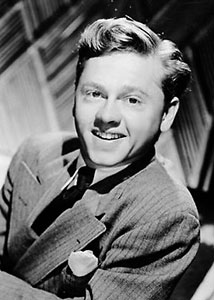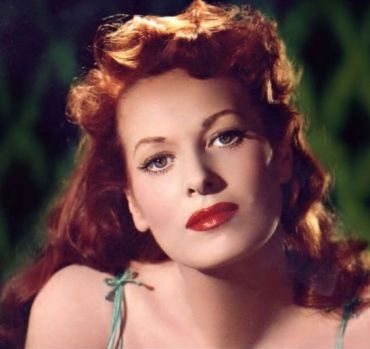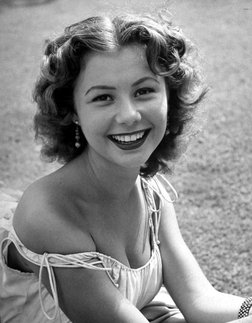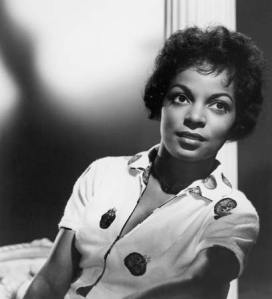Cinema Station
Sidney Lumet (1924- 2011)
Leave a Comment
Sidney Lumet (1924- 2011)
The film work of director Sidney Lumet struck me like Mother Goose’s “Little Girl with Curls”. When he was good (12 Angry Men (1957), Long Day’s Journey into Night (1963), The Hill (1965), Serpico (1973), Dog Day Afternoon (1975), Prince of the City (1981), The Verdict (1982)), he was very, very good. And when he was bad (That Kind of Woman (1959), Last of the Mobile Hotshots (1970), Child’s Play (1972), Family Business (1984), Power (1986), Gloria (1999), he was horrid. But that doesn’t tell the whole story. Because there was other works that weren’t great and could stand out among the general work that was coming out that year. I’m talking about films like The Deadly Affair (1966), Murder on the Orient Express (1974), Just Tell Me what you Want (1980), and Running on Empty (1988).They were films that attested to his skill and expert abilities as a professional industry filmmaker.
But what I appreciate him for most (besides films like The Hill and The Verdict, which I absolutely love) is the book he wrote simply called Making Movies (Vintage Books -1996). It is not an autobiography as has been erroneously stated in so many articles and obits. It is a book about filmmaking drawn from his experiences as a major filmmaker.
I love this book. To me it is the best book written about professional, industry style movie making I’ve ever read. In it he breaks down every aspect of the filmmaking process in simple straight forward, non technical language accompanied by anecdotes drawn from his own times on the set or in the editing rooms etc. I’ve used this book as a text many times and recommend it highly for anyone who’s interested in how the high end movies that play at their local multiplex are made. Try it; I think that you’ll agree that it was worth the effort.
Question: Whatever happened to his film adaptation of Arthur Miller’s A View from the Bridge (1962)? No one ever talks about it or shows it anywhere. As I remember it was a pretty good film.
Anyway, those are my thoughts on Lumet upon reading the notice of his death. He was a very good filmmaker who made films that often forced us to think about the moral and ethical standards by which we live. In a business that’s often as crass and childish as the movie business can be that is high praise indeed.
-GE
Desert Island Movie #8: Summer Stock
Leave a Comment
Summer Stock
Desert Island movie #8
If I had to chose the one movie to credit (or blame) for my getting involved with theatre and film as a profession that film would have to be Summer Stock (1950) starring Judy Garland and Gene Kelly along with a great array of supporting players including the great but often overlooked Ray Collins of Citizen Kane fame. In Welles’ picture he plays Boss Geddes and had the line; “If it was anyone else I would feel sorry for you Mr. Kane. But you’re going to need more than one lesson and I’m going to give them to you.” Here he gives an amusingly comic performance as Eddie Bracken’s overbearing father.
When I first saw Summer Stock I fell in love with both Judy and Gene. She for her singing and him for his dancing. To me and all the guys I grew up with Kelly was just the epitome’ of cool. Especially when he does the “You Wonderful You” song with her. We were just at the age where girls were beginning to interest us and we thought that what Gene did with that song was the perfect formula for seduction. He became our hero after that. I remember that some of the other guys started taking tap dancing lessons just so that they could be like Kelly. I didn’t but I did memorize all the songs and made it my goal to enter some aspect of show business when I grew up. I had no idea what area I wanted to pursue but figured that I would discover it somewhere along the way, and ultimately I did.
Judy and Gene had been together in two films before. For Me and My Gal (1942 and The Pirate (1948). And although they remained good friends for life Summer Stock was their last film together and her last for MGM the studio that had been her home for so long.
Now despite the happy end result Summer Stock was a troubled production. Judy was constantly sick or absent for a variety of reasons. So scenes had to be rewritten and altered, songs had to be changed and accommodations made for her fluctuations in weight. The most famous number in the film ”Get Happy” was shot and added to it several months after its completion. And Judy who looks rather heavy throughout looks slimmed and sleek in that great iconic number…From all reports of the shoot Kelly was a real trooper and provided Judy with invaluable support during these troubled times. He does well for himself too with a couple of show stopping numbers. Eddie Bracken is funny as Judy’s hometown boyfriend. Phil Silvers in a nondescript role steals nearly every moment he’s on screen. There’s also Gloria DeHaven as Judy’s spoiled, sexy sister, while Hans Conried enlivens the few scenes he’s in. Marjorie Main and the tall, curious Carleton Carpenter add their idiosyncratic personalities to the proceedings as well.
The story is a variation of the old Mickey Rooney/ Judy Garland staple about putting on a show in a barn in order to impress the bigwigs from Broadway. This time around Kelly is the broke but ambitious director, producer, choreographer of a show that needs a place to rehearse out of town. Judy owns a barn that her sister (DeHaven) says they can use. Judy objects but can hardly say no. Things become complicated when the stars of the show leave and as we knew they would, Judy and Gene have to assume the roles. During the course of things the wrong couples fall out of love, the right ones fall in love and finally all’s well that ends well. Some standout musical numbers include;” Friendly Star…Happy Harvest…Dig! Dig! Dig!…If You Feel Like Singing and Heavenly Music.”
Now one bit of caution. If you don’t like musicals this is one to skip. But if like me you do, then this is one to treasure.
-GE.
A Brief Note on Elizabeth Taylor
Leave a Comment
A Brief Note on Elizabeth Taylor
From my point of view with the passing of Elizabeth Taylor (1932-2011) we are witnessing the passing of the “Last Hollywood Star” in the old fashioned sense of the term. “One whose luminous being lights up the screen with the incandescence of her personality and talent.” To my mind and way of looking at things she was genuine cinema royalty. Perhaps the greatest in cinema history. The Queen. Valentino was big, Monroe is big right to this moment, Dean, Bogart, Hepburn (both Katherine and Audrey) Frank Sinatra and a few others still hold their place in motion pictures Hall of Fame. But Ms. Taylor held it for nearly seven decades in a tumultuous life filled with highs and lows that was recorded and scrutinized in pages of the popular press all over the world. At one point even the Vatican got in on the act by commenting on her relationship/ affair with Richard Burton while they were filming Cleopatra (1963) in Italy.
She had achieved stardom early and held on to it right to the end. And whenever I think about fame and stardom, the kind one achieves through motion pictures I see it as a phenomena that can harm or destroy as well as elevate. Some people can handle it some are perplexed, disarmed and even destroyed by it. But Elizabeth Taylor is the only one I can think of who actually lived with it day in and day out and not only handled it with aplomb but actually ruled it. She was the Queen and the press her unruly subjects. Sometimes they would rebel and even attack her but they always paid homage and in the end always acknowledged that she was the boss.
Now we know of the scandals, the multiple marriages, her incredible generosity, her steadfastness when it came to supporting her friends along with her personal courage in the face of adversity or opposition. So there is no need to reiterate them here. We also know of her award winning performances in the many motion pictures she made going all the way back to 1942. What I want to do now is list my favorite of her screen performances.
A Place in the Sun (1951) – her romantic teaming with Montgomery Clift is possibly the most perfect in all motion pictures.
Giant (1956) – It should’ve been a man’s film but she carries it so well that everyone else even the excellent Rock Hudson and James Dean seem supporting players to her.
Cat on a Hot Tin Roof (1958) – Putting her together with Paul Newman was another beautiful match made in cinema heaven. And their dramatic clashes made for real screen fireworks.
Suddenly, Last Summer (1959) – a curious mixture of melodrama and poetically articulated states of sexual aberrations. She stands out in a difficult and sometimes seemingly contradictory role.
And finally Reflections in a Golden Eyes (1967) – John Huston’s interesting adaptation of Carson McCullers novella. In this one she’s teamed with Marlon Brando and although they both seem to be in different films both are excellent. In fact I think she gives one of the most nuanced performance of her career here.
So as far as I am concerned the Queen may be dead but her performances will live on and on and on.
-GE.
Desert Island Movie #7: Lolita (1962)
Leave a Comment
Lolita (1962)
Desert Island movie #7
When I first saw this film in 1962 everyone I knew disliked it. They thought it crude, tasteless, and a crass betrayal of Nabokov’s controversial novel. I thought the opposite. I thought it was a near masterpiece and I still think so. I also thought that the performances of James Mason Peter Sellers and especially Shelly Winters in the principle roles were of award caliber. But I was in the minority because only the screenplay credited to Nabokov (but vastly rewritten by Kubrick and his partner James B. Harris) was nominated for the Academy Award. It lost to Horton Foote’s screen adaptation of To Kill a Mockingbird. In fact as late as 1981 when I asked playwright Edward Albee why he had chosen to adapt Nabokov’s novel for the stage his response was; “Someone has to correct the damage that Kubrick’s film has done.”
Curiously in 1997 after seeing director Adrian Lyne’s version of the same story, that many felt was a closer and more accurate version of the novel, I had nearly the same response to it as my peers had to the Kubrick film. And to me the actors Jeremy Irons, Melanie Griffith and Dominique Swain, good as they often are; here they seem just shadows of the full bodied creations provided earlier by Mason, Winters and Lyons. And the Quilty character so memorably created by Peter Sellers is merely an oafish presence. Kubrick and Sellers presents him as the personification of perversity and evil whose actions justify Humbert’s final act. In the Lyne version I got no such feeling. Now this is not a critique of Frank Langella’s performance. The role was conceived along different lines that reshaped and reduced his character.
The people who hate Kubrick’s version of the story hate it for all the reasons that I love it. Apparently after paying Nabokov to write his screen adaptation of the novel Kubrick and his partner rewrote what Nabokov had given them. They rewrote it to the point where Nabokov himself felt compelled to publish his script. I read them both and prefer what Kubrick and company did with it. He shifted the emphasis away from strictly pedophilia (or in Nabokov’s parlance Nymphet love) to obsessive love. The kind of love that chokes and strangles, becomes possessive in ways that leads to petty jealousies and envy. The kind of love that consumes the lover and ultimately leads to his or her destruction. This apparently did not sit well with the purists who I guess wanted the screen version to embrace the novel’s plotline more closely. Also many felt that the tone was wrong. Kubrick had chosen to tell the story from an absurdist perspective. As a result many scenes take on a comic view of what many feel is a serious/ criminal issue. But I love it and find that many of the scenes involving Humbert, Charlotte and Lolita high comedy of the rarest kind. And Sellers entire portrayal of Quilty a comic tour de force. James Mason I think gives the best performance of his career as the redundantly named Humbert Humbert while Shelly Winters should’ve been considerably more recognized and praised for what she did with the “Haze” woman’s character. She is by turns crude, pretentious, predatory, amusing pathetic and even soulful. This was as complete a performance as I’ve seen in a long time…The dialogue of the screenplay retains much of Nabokov’s prose style and word play with things like the Town of Ramsdale, Beardsley College and Camp Climax.
The opening scene that precedes the credits could work as a one act play by someone like Eugene Ionesco. And the ending where Humbert desperetly tells Lolita that the distance from where they are to the world outside is only 25 paces. “Come with me” he implores her “Live with me; die with me, everything with me.” is to me one of the saddest and dramatically painful bits of acting I’ve ever seen any actor play.
The novel Lolita is considered to be one of the best novels of the 20th Century. There have been four stage adaptations, one musical Lolita, My Love (1971) by none other than Alan J. Lerner of My Fair Lady fame, two operas along with two ballets. All are considered critical as well as commercial failures. To the best of my knowledge none have succeeded at capturing the central comic/tragic essence of the novel better than Kubrick with this film. For besides being comic and tragic it is also dramatically compelling and inventive in unexpected ways. And in the final analysis it does the greatest service a film can provide a novel. It makes you want to read the book.
On my desert island I sometimes want to engage with works that move me in a variety of ways. This film takes me through elements of pity and fear and then back again a few times. And that is the reason I have it here on my desert isle.
-GE.






























